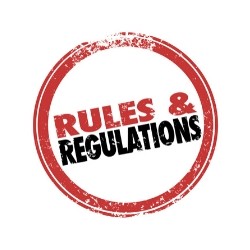As people bunker down and set themselves up for working from home this can pose a challenge for management. Apart from the health and safety issues that employers are needing to be mindful of in relation to the remote workspaces, the more challenging problem is in relation to worker effectiveness.
There is a presumption by many in management that we can simply relocate people to a remote working environment and implement some form of technology to maintain workflow and communication and people will be just as productive, if not more productive, than they are when sitting in the company offices. This might be the case for some workers it doesn’t necessarily mean that is the case for all. Some people work better in an office environment where there is a certain ‘discipline’ attached to arriving in the office and interacting with co-workers. Making the morning tea or coffee and then sitting down in a communal environment to tackle the tasks of the day is, for some, not only enjoyable but a motivation necessity.
For some the home office environment can create a sense of procrastination that does not allow itself to occur in the office. Some people think that they have all day available to ‘get work done’ because there are no interruptions and no need to waste time commuting and consequently have no sense of urgency. In their mind they are more efficient, but when it comes to looking at accomplishments of the day it doesn’t seem to add up.
Micro-managers, ugh!
Managers need to think of how they manage this new environment without becoming micro-managers. In the office managers know people work in different ways and they often alter their style to manage people in a certain way to get the best from them. Some people might work well with ‘set and forget’ approach because they are highly capable and self-motivated and you, as their manager, know that the job will get done. Others might lack the same combination of ability and motivation and your office approach has historically been to ‘touch base’ more regularly throughout the day. This could be through more formal mechanisms or just the daily dialogue interspersed with more social chat which allows you to keep in touch with productivity and workload. In the office we can often see the input and output of work, whether it is in paperwork that move between desks and other work centres or the level of interaction between various team members or the hive of activity with people moving about.
In this new environment, without the visual cues that we are used to, how can managers be sure that their team members are achieving the necessary objectives as and when required. For some transactional activities where it’s easy to count things per hour or per day. This might be a simple metric that is tracked. For knowledge based work, or project work, where the output is less tangible or less ‘immediate’, how can we be sure that people are tracking to schedule. Is simply asking team members ‘how are you are going?” enough? Is someone who is struggling to get motivated or distracted in other ways really going to tell their manager that they haven’t been very productive today?
Rethink how you engage with your team
This is one occasion where we might want to rethink how we engage with our teams and consider that the management style that worked well in the office may not work as well for some of our remote workers. It might be appropriate to think about changing your communication style to use more open questions rather than closed. For instance, “Tell me how you dealt with the XYZ issue yesterday” might be better than asking “How are you going with XYZ issue”. Asking someone to tell you about the barriers that exist in achieving ABC before the deadline and then ask about the intended actions to overcome them might be far more informative than the question “How is ABC going?”

The New Model of Work
If we want our workers to be productive in the transition to a new working environment it will be necessary to think of how we effectively manage these arrangements. Managing remote workforces is not new, however for many who have had to quickly come to terms with operating a distributed business this is new territory and we are trying to manage this with our existing paradigms on managing work.
In looking back in time the principles of management theorists of the likes of Henri Fayol and Max Weber I am reminded of the importance of their early work and the need to reconsider the ways their theory is brought to life in new modern working models.
From Max Weber, we have the Hierarchical Layers of Authority as one of his principles. Put simply this states that each layer of management is responsible for its staff and overall performance. Weber’s remarks come from a time when the establishment of centralised workplaces was growing, where it was possible for the managers to see their staff working throughout the day. Given the current telework that is in place, how do managers really ensure that they meet their responsibility in this regard? Is a video meeting really sufficient when these formats tend to consist of short, targeted, communications?

What New Rules Are Needed?
Another principle relates to rules and requirements to ensure uniformity. Given that businesses have had to adapt to remote work very quickly it’s hard to think that the rules and requirements of remote working have been appropriately considered for best effect. Many businesses have had to come up to speed quickly and managed to put things into place that might be suitable as an interim measure maintain business continuity. The real test will be in months to come and how businesses will start to deal with ‘worker fatigue’ as the novelty of working from home wears off and when cracks start to appear in the structure of the organisation.

Managers will need to look more deeply into their operational strategy to develop more sophisticated ways of managing their teams, long term, in a new environment. When long term arrangements are to be considered what does the employment relationship look like? Can the employer dictate the type of ergonomic office equipment is used? What about computer set-ups? Do employers take on the responsibility of the home computer? Does this extend to the operating systems, versions, applications and licenses? Do they provide the equipment? Who is responsible for the insurance?

If enterprises are saving on rent and other costs by not having premises, do they then look to revise worker remuneration packages to account for the increased home heating, cooling and utility costs incurred by the home-based worker? Do they contribute to the technology upgrades? What about office stationery requirements?
If a household has only one computer available and multiple people work from home for different organisations who makes the call on what is allowed? If work contribute to the computer, what rights to they have to my personal browsing history when I’ve clocked off from work for the day? The more one thinks about this, the more convoluted the questions become as the lines between work and home are increasingly blurred.
It is my guess that most of these types of things were not considered in the ramp up phase that we currently find ourselves in. My advice is to start thinking about it as it will soon start to be raised if we intend to continue to operate in this environment well into the future.
“Is anyone missing a can of worms?”
John Yealland is a management consultant and process improvement expert who has worked with business leaders in a wide range of industries to help them improve the performance of their organisation.




